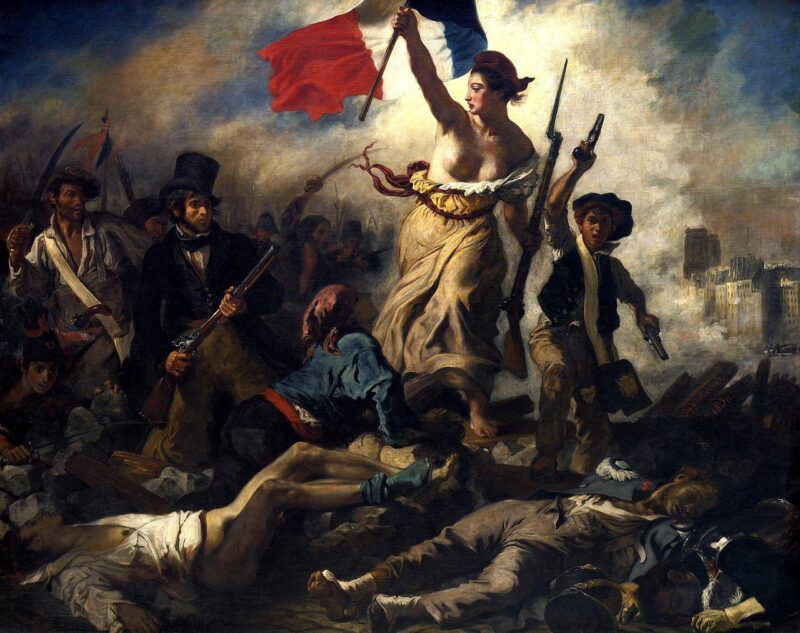
The Russian Revolution stands as one of the most pivotal events of the 20th century, fundamentally altering the course of world history. It’s an intricate phenomenon driven by a myriad of factors, including social unrest, economic hardship, and the desire for political reform. This article delves into the causes, progression, and implications of the Russian Revolution, highlighting how it shaped not only Russia but the entire world in the decades that followed.
1. Background: The State of Russia Before the Revolution
Before diving into the Revolution itself, it is crucial to understand the landscape of Russia prior to 1917. By the early 20th century, Russia was a vast empire with a diverse population that included numerous ethnic groups. However, it suffered from significant issues:
- Feudalism: The remnants of serfdom lingered, with a small elite holding most of the land, while the peasantry lived in poverty and oppression.
- Industrialization: Rapid industrial growth in the late 19th century led to urbanization, but it also birthed grim working conditions, low wages, and labor unrest.
- Political Autocracy: Tsar Nicholas II ruled with absolute power, and the lack of political reforms stifled any form of dissent or representation for the burgeoning middle and working classes.
- Socio-economic Disparities: A significant gap existed between the wealthy elite and the impoverished majority, creating a fertile ground for revolutionary ideas to take root.
The combination of these factors created a volatile environment, ripe for change and upheaval.
2. The Revolution Unfolds: Key Events and Phases
The Russian Revolution consisted of two major events: the February Revolution and the October Revolution, each significant in its own right.
February Revolution (February 1917)
The February Revolution was largely spontaneous, fueled by widespread discontent with the Tsar’s regime. Key events leading up to the revolution included:
- Economic Hardships: Food shortages and rising prices in cities led to strikes and protests starting in Petrograd (now Saint Petersburg).
- Military Failures: Russia’s poor performance in World War I exacerbated public dissatisfaction, leading many soldiers to mutiny.
- Mass Protests: On International Women’s Day, thousands took to the streets, calling for bread and an end to the war, which escalated to widespread protests and strikes.
Ultimately, faced with the chaos and loss of support, Tsar Nicholas II abdicated the throne on March 15, 1917, ending centuries of Romanov rule. A Provisional Government was established, but it struggled to keep stability.
October Revolution (October 1917)
The October Revolution was characterized by more organized efforts from revolutionary factions, particularly the Bolsheviks, led by Vladimir Lenin. Key aspects included:
- Bolshevik Party Rising: The Bolsheviks promised “peace, land, and bread” to the war-weary populace and gained increasing support among the industrial workers and peasants.
- Seizing Power: On October 25 (Julian calendar), the Bolsheviks launched a near-bloodless coup, seizing key locations in Petrograd and ultimately taking control of the government.
- Declaration of the Soviet Government: The Bolsheviks established the world’s first socialist government, though their victory was contested, leading to civil war.
3. The Impact of the Russian Revolution on Russia
The Russian Revolution had profound effects on Russia and its society:
- Formation of the Soviet Union: By December 1922, the Bolsheviks had consolidated their power, officially forming the USSR, which would exist until 1991. This marked the rise of communism as a major political force on the global stage.
- Civil War (1917-1922): The Revolution ignited a brutal civil war between the Red Army (Bolsheviks) and the White Army (anti-Bolsheviks), leading to significant loss of life and deep societal fractures.
- Social Changes: The Bolsheviks aimed to reshape society through land redistribution, women’s rights advancements, and an emphasis on education and literacy, fundamentally altering social hierarchies in Russia.
- Economic Reforms: The introduction of War Communism and later the New Economic Policy (NEP) reflected the Bolshevik regime’s attempts to stabilize a distressed economy while maintaining control over key industries.
The consequences of these changes rippled throughout Russia, instigating both advancements and challenges during the early Soviet years.
4. Global Influence of the Russian Revolution
The reverberations of the Russian Revolution extended far beyond its borders, inspiring movements and revolutions worldwide:
- Rise of Communism Globally: The success of the Bolsheviks inspired numerous communist movements in different countries, influencing revolutions in China, Cuba, and beyond.
- Cold War Dynamics: The ideological divide between communism and capitalism becomes a central feature of international relations, culminating in the Cold War, an era marked by political, military, and ideological tensions between the USSR and Western nations, particularly the United States.
- Anti-Colonial Movements: The Revolution fueled anti-colonial sentiments; leaders in various regions perceived Bolshevik ideas as inspiration to challenge colonial powers and seek independence or reform.
- Influence on Revolutionary Ideologies: Marxist-Leninist ideology became a blueprint for subsequent revolutionary movements, shaping leftist thought across the globe throughout the 20th century.
The Russian Revolution thus not only reshaped Russia but influenced major global political currents and ideologies, with effects still felt in some regions of the world today.
5. Conclusion: Legacy of the Russian Revolution
The Russian Revolution remains a monumental chapter in history, representing a turning point that had far-reaching impacts across the globe. Despite its initial promise of social equality and reform, the revolution led to a regime characterized by repression, censorship, and authoritarianism. Nonetheless, it continues to serve as a potent symbol of the struggle against oppression and the fight for social and economic justice.
As we reflect upon this pivotal moment, we recognize the lessons it offers about the complex relationship between revolutionary fervor and the realities of governance. The legacy of the Russian Revolution compels us to examine the balance of idealism and pragmatism in striving for a better society, urging vigilance against the pitfalls that can accompany radical change in pursuit of a just world.






